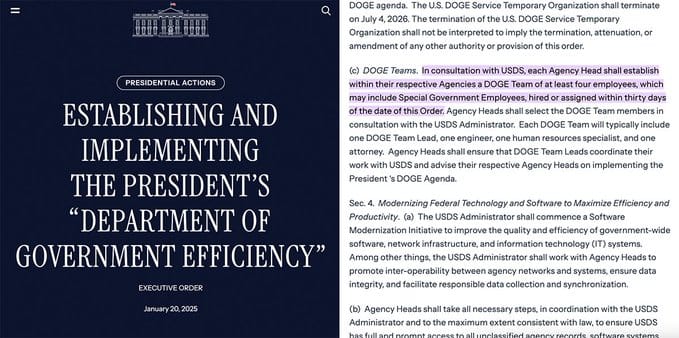President Donald Trump has officially signed an executive order to establish the Department of Government Efficiency (DOGE), which is spearheaded by Elon Musk and was initially set up to cut government spending and modernise federal technology.
DOGE is now officially part of the U.S. government structure, though it started as an advisory body outside the government.
The executive order renames the U.S. Digital Service (USDS) to the “U.S. DOGE Service” (USDS), maintaining the same acronym but shifting its focus.
This service is set to have around 20 employees and will be led by Musk, with a mission to streamline government operations and update federal software systems to private-sector standards.
The primary objectives include modernising federal technology, reducing the size and scope of government, and implementing a “Software Modernisation Initiative” to enhance government-wide software, network infrastructure, and IT systems. The executive order also mandates each federal agency to form “DOGE Teams” to work on these initiatives.
There are ongoing legal concerns regarding DOGE’s transparency and compliance with the Federal Advisory Committee Act (FACA), with lawsuits questioning whether the commission’s setup meets the necessary legal standards for transparency and balanced representation.

Vivek Ramaswamy, who co-led DOGE with Musk, has reportedly left to pursue a gubernatorial run in Ohio.
The announcement of DOGE’s official establishment has had a notable impact on Dogecoin, with the cryptocurrency experiencing significant price increases, reflecting its association with the DOGE acronym.
There’s a mix of scepticism and support for DOGE’s goals. While some view it as a necessary move to reduce government inefficiencies, others question its practicality and effectiveness, especially in achieving the ambitious spending cuts initially proposed by Musk.
This executive order represents one of Trump’s first actions in his presidency, focusing on government efficiency and technological modernisation, though it remains to be seen how these plans will unfold amidst legal challenges and political scrutiny.















